How to Choose Your First Tarot Deck
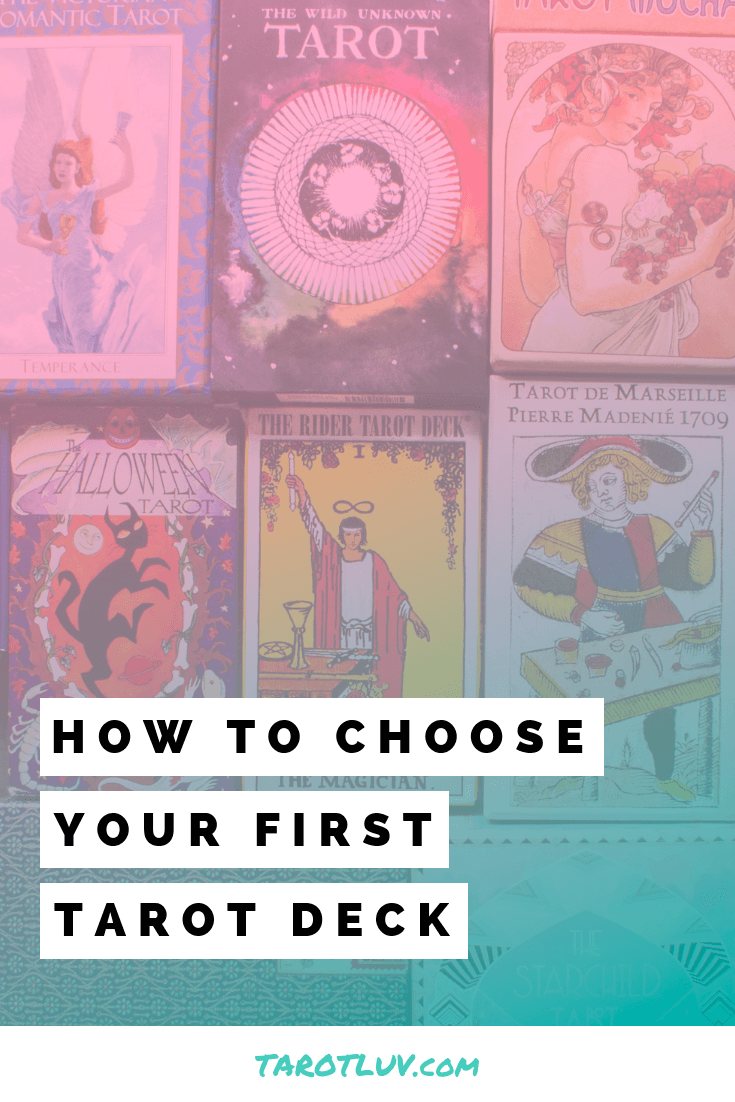
An Amazon search for ‘tarot deck’ yields over 4,000 results. That number doesn’t include the wealth of indie tarot decks out there either. Choosing your first tarot deck might seem overwhelming at first, but don’t worry. Let’s break down five simple considerations that will help you find the perfect tarot cards for you.
✨ This post contains affiliate links for decks and books available on Amazon. Check out the affiliate policy here. ✨
1. Keep it Simple: The Rider-Waite-Smith Deck and Its Clones
If you’re new to tarot, I would recommend keeping it simple by starting with the Rider-Waite-Smith tarot deck, or a variation of it. The Rider-Waite-Smith is a modern (1910) reworking of historical tarocchi cards. It’s become the most popular system of tarot in the United States and England.
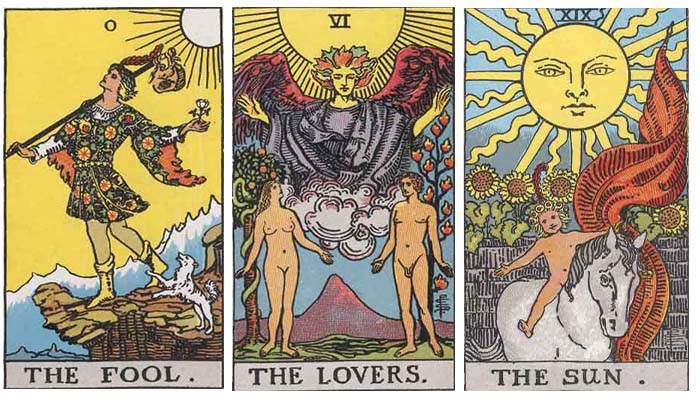
Major Arcana Examples from the Rider-Waite-Smith Tarot Deck
The original deck was illustrated by Pamela Coleman Smith and conceptualized by Arthur Waite (if you’re wondering who Rider is: Rider and Sons was the first publishing house to reproduce the deck). Reproductions of older, historical decks are still available (we’ll talk about that later in the post). But the Rider-Waite-Smith tarot adds new imagery and meanings to older tarot illustrations. In contrast to most historical decks, the Rider-Waite-Smith has illustrated pip cards – making them much easier for learning.
Here’s a compare and contrast to see what I mean:
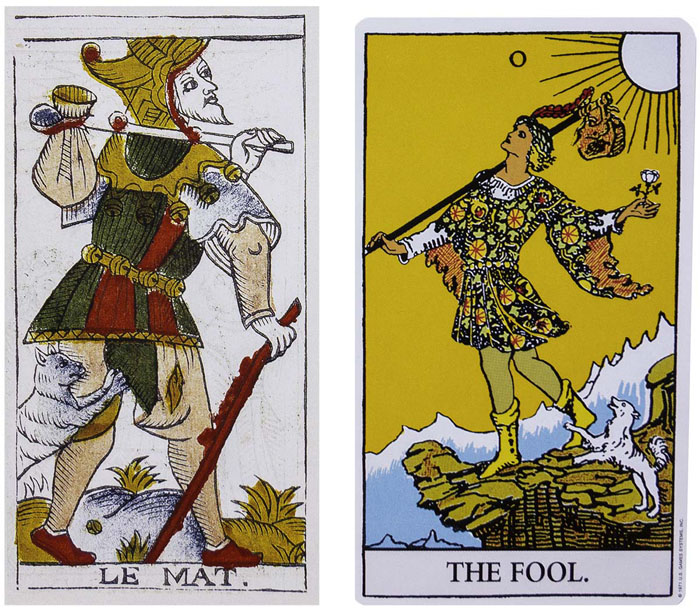
The Fool vs Le Mat – Tarot Cards
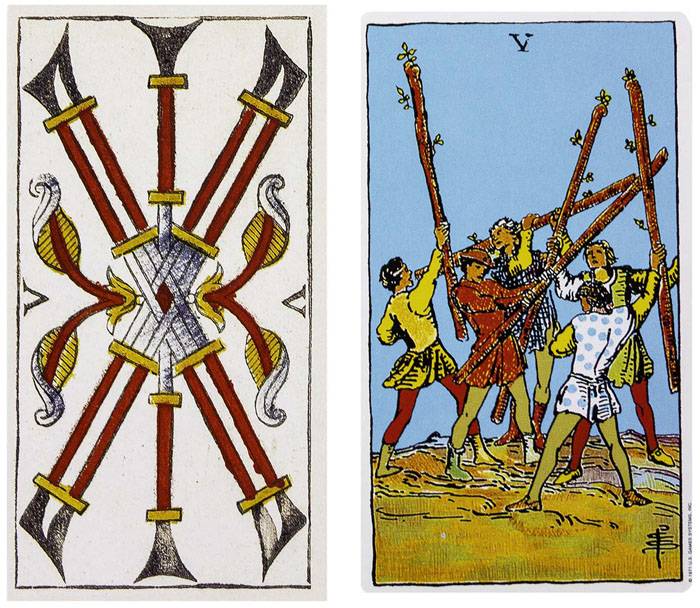
Five of Rods vs Five of Wands Comparison
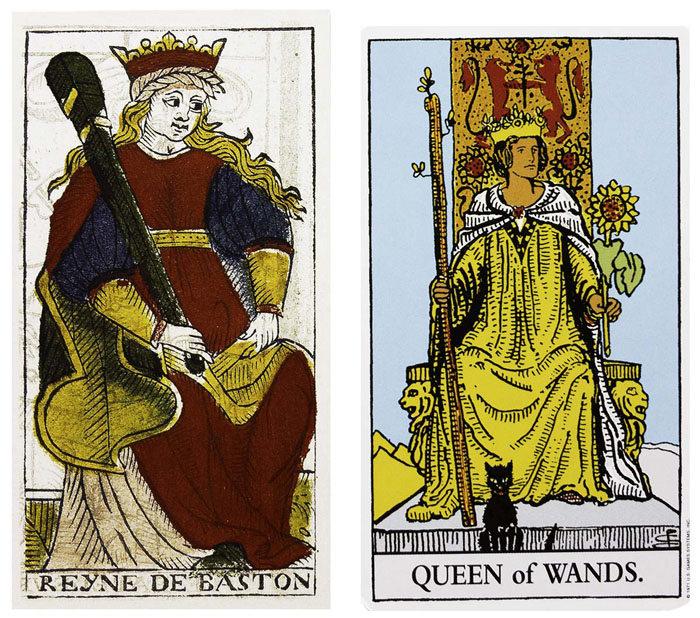
Queen of Batons vs Queen of Wands
You can see there’s a big difference between the Rider-Waite-Smith (RWS) tarot and the traditional Marseille deck’s pip cards. Even in the Major Arcana, there’s a lot more imagery that you can draw on within the RWS tarot.
You can plenty of RWS clones and variations. But if you’re totally new and hoping to learn the ins and outs of the color symbolism and imagery in the traditional deck, then you might want to start out with the original first, or a very close redrawing/recoloring of the deck.
Unless otherwise advertised, pretty much any book or course you would take in an English-speaking country will be referencing a Rider-Waite-Smith deck. And too, the RWS is a descendant of traditional European tarot decks. So, start with this deck, and you’ll have plenty of resources available to you. You’ll also have a leg up on the Major Arcana meanings if you decide to explore Marseille tarot.
If you don’t like the flat coloring on the standard reproduction of the RWS tarot, there are a few beautiful modern variations of it available. The most popular redrawing and recoloration of the Rider-Waite-Smith include the Hanson Roberts, the Radiant Rider-Waite, and the Universal Waite tarot.
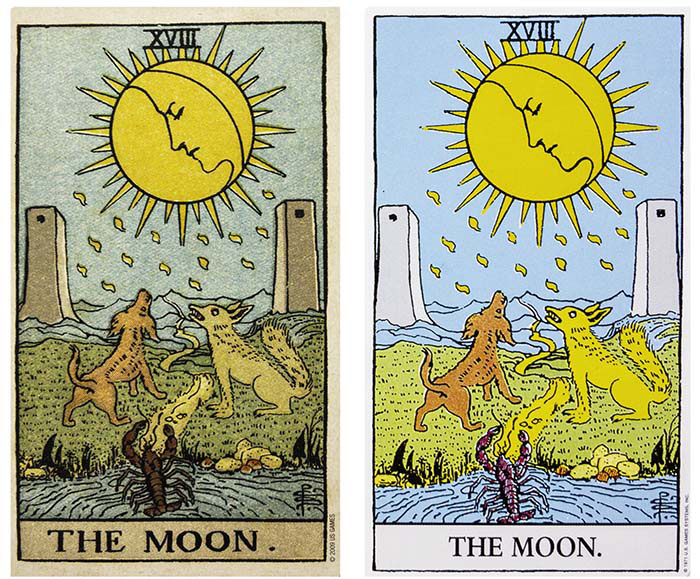
Waite-Smith Moon Tarot Card Comparison
If you like an antiqued, vintage look to your tarot cards, I highly recommend the Centennial Pamela Coleman Smith edition of the cards by U.S. games system. This reproduction closely resembles the first 1910 lithograph printing of the iconic deck. It is my absolute favorite variation of the classic Rider-Waite-Smith.
2. Choose What You’re Drawn To.
If learning the original meanings isn’t a big deal to you, and you just want to get started, then choose a deck with artwork that speaks to you. I’d recommend picking something that comes with a companion book or booklet if you’re totally new. The little white book that’s usually included in tarot decks totally counts too.
There’s are tarot decks for all aesthetics and interests.
Like dragons? You’ll definitely find a Dragon Tarot.
Are fairies your thing? There are lots of fairy themed decks out there.
Into Steampunk? Cool.
Name a theme, and it probably exists out there somewhere.
Here are my current favorites to give you an idea of the variety of art styles in modern tarot:
The Fountain Tarot – This might be my favorite deck of all time along with my trusty centennial Rider-Waite-Smith. It’s a light, airy, modern deck. I use it for 90% of my personal tarot readings for myself.
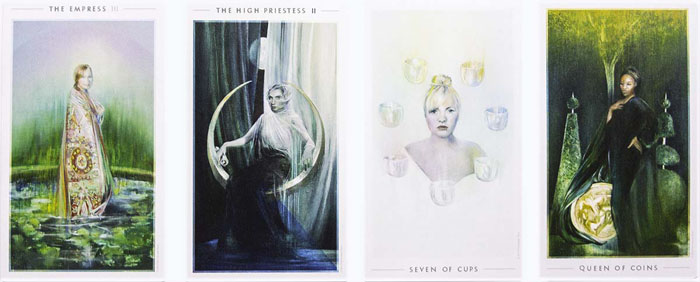
The Fountain Tarot
Morgan-Greer Tarot – A groovy Rider-Waite-Smith inspired deck from 1970’s that’s still in print. It’s one of my favorite decks to use with clients. I love the warm tones and I use it frequently in late summer and fall.
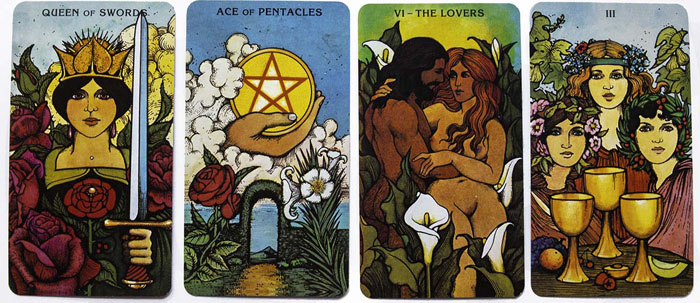
Morgan Greer Tarot
Halloween Tarot – This was the second tarot deck I ever purchased -over 20 years ago! It’s still one of my favorites. Kipling West draws on vintage Halloween motifs for this quirky deck. It’s playful, beautifully illustrated, and creative while still maintaining the traditional Rider Waite Smith motifs and meanings for each card.
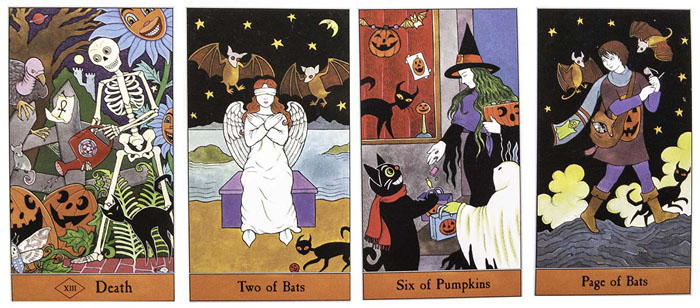
The Halloween Tarot by Kipling West
Wild Unknown – A gorgeous pen, ink and watercolor deck by Kim Krans that takes inspiration from the Rider-Waite-Smith system of tarot. Although there have always been indie tarot decks around, this one, in particular, struck a chord with the public. Its modern imagery and approachability for beginners have helped fuel a modern resurgence of interest in indie tarot decks (and I dare say tarot in general!).
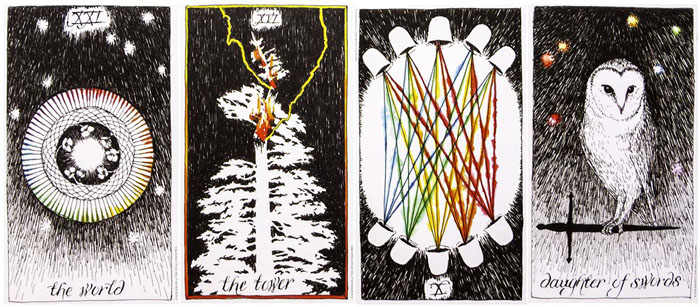
Wild Unknown Tarot
Tarot del Fuego – This is a Marseille-style deck. The pip cards don’t correspond with Rider-Waite-Smith meanings, but don’t let that give you pause! There’s still a lot of imagery you can play off for intuitive tarot readings or use numerology associations for the pips. It has a surrealist flair with bold colors.
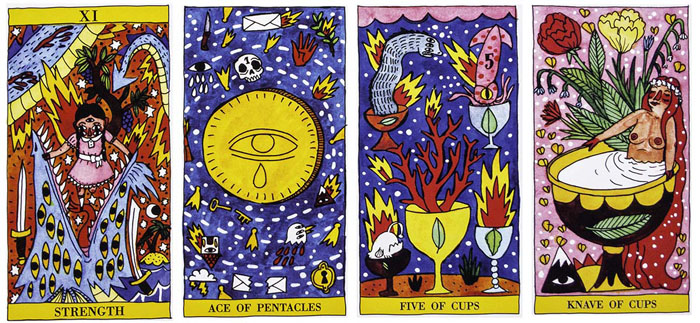
Tarot Del Fuego
I have many more tarot decks that I love (and even more on my wishlist!), but those five are my current go-to decks.
And a special note to my fellow history nerds: There are great reproductions of historical decks out there if you like the Old-World style of Marseille tarot. These will have fewer resources available in English. Lo Scarabeo is releasing historical decks. The Sola-Busca, 1JJ Swiss, Etteilla, and Marseille tarot are available in print.
There are also artists taking inspiration from the tarot decks that came before the Rider-Waite-Smith. I mentioned the Tarot del Fuego earlier as a great modern Marseille tarot deck. Wandering Oracle has a fantastic watercolor and ink deck called the Marshmallow Marseille. As well as fine, hand-colored, and cut decks by Ryan Edwards. Again, keep in mind that there are fewer English resources for these decks (Italian, French, and Spanish speakers will have a lot more material at their disposal). For English resources on Marseille tarot, check out Tarot – The Open Reading by Yoav Ben-Dov and Camelia Elias’s Towards the Art of Reading great books on the Marseille Tarot.
3. Size Options
Most tarot decks are printed 2.75” (70mm) by 4.75” (120 mm), so larger than a pack of playing cards. This standard size fits well in most hands. But, having an oversized tarot deck is great for teaching and for anyone with vision impairment. They also look pretty sweet on a crystal grid, in a meditation space, or on an altar for some tarot card manifestation spreads!
Oversized tarot decks can be difficult for small hands to shuffle. But unless this is something that really bothers you, I wouldn’t pass up a deck that you strongly connect to because of the size. There are alternative ways of shuffling that work well with large tarot decks.
You’ll also find tarot decks in mini-sizes. The minis are great for sticking in a bag to carry with you for a quick draw! There’s also a trend of tarot decks “in a tin”, which is typically a deck that’s the size of standard poker playing cards. The Rider-Waite-Smith tarot is available a mini and giant size.
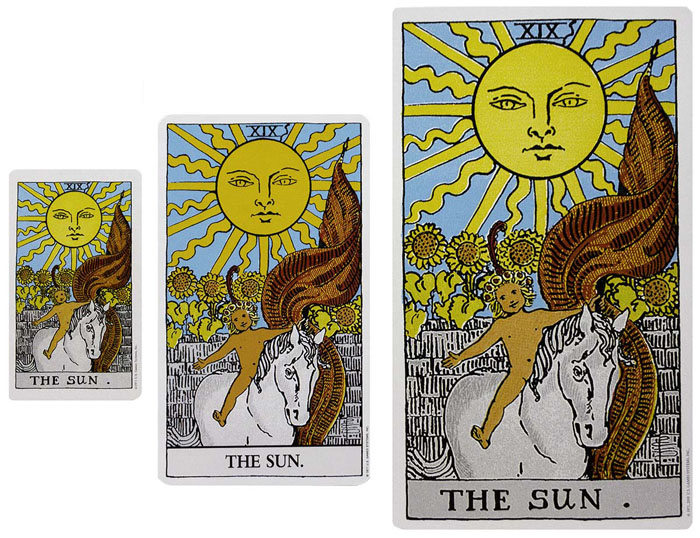
Mini, Standard, and Giant Rider-Waite-Smith Tarot Comparisons
4. Quality Matters
Speaking of the physical requirements of the deck —let’s talk quality. It doesn’t hurt to peruse reviews of the deck you’re considering to see what others say about the quality. The biggest issue I see right now with tarot cards are cardstock problems. Some companies use cardstock that’s so thin that you risk creasing the cards when shuffling. Also, cards that are poorly laminated. You’ll spot people pointing out these flaws when you look at reviews.
Image quality can sometimes be an issue too. The majority of modern tarot decks printed today have great image quality —they aren’t a scan of hand-drawn tracing of a photo taken of the original deck from 1950. You get my drift.
I wish I could show you the very first Rider-Waite-Smith deck that I purchased. The card images looked like they were traced in MS-Paint. It was a highly pixelated disaster. But, luckily for new tarot enthusiasts, decks with that level of poor image quality are now few and far in-between.
5. Consider your intention
One last thing to consider is what do you want to use the deck for? Are you hoping to start reading tarot for friends and, potentially, clients? Or are you looking for something to incorporate into a journaling or meditation routine?
If the intention is to start a daily practice where you draw a card to reflect on and tap into your intuition, almost any deck you choose will work. If you’re hoping to go deeper with tarot, and potentially start reading for others in the future, picking a Rider-Waite-Smith deck will provide you with the most resources available for learning.
Yes, you can totally pick up a deck of tarot cards (or playing cards, for that matter) and be a great reader. Some folks take to tarot without ever having read the “The Little White Book” that accompanies most decks. But a lot of people gain valuable insights from the perspective of other readers and creatives delving into the nuisances of the tarot.
And, spoiler alert: if you decide to read professionally, you’re most likely going to get bitten by the tarot collecting bug. You’ll have a deck, or two, for love-related questions, one for career readings, one for spiritual matters, one for use at parties, etc… you have been forewarned!
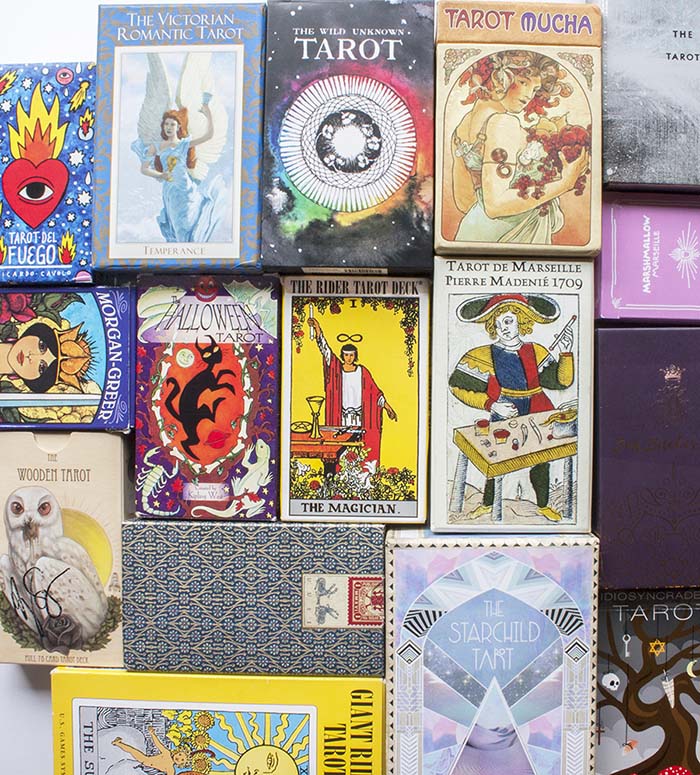
Tarot deck collection: warning, this may happen to you!
As you can see, you have a lot of choices. Don’t let indecision prevent you from getting your first deck. Choose what feels right for you. If this is overwhelming —just grab a Rider-Waite-Smith deck. If it turns out you don’t end up liking the deck you chose, you can always trade or resell it. There’s plenty of great tarot swapping groups on Facebook for decks in need of a new home.
One last thing: the convenience of Amazon is great for snagging new tarot decks. But consider supporting your local metaphysical store or independent artists/sellers of indie tarot decks.
Have any others tips on selecting tarot decks? Know of any great small businesses that sell tarot decks? Share your insights in the comments section down below! Bookshop.org is a great source for supporting indie booksellers. Check out some of my favorite picks in my shop.

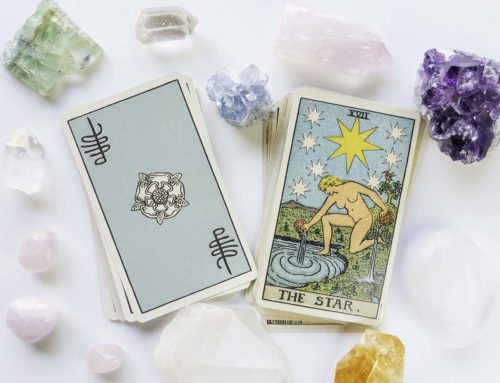
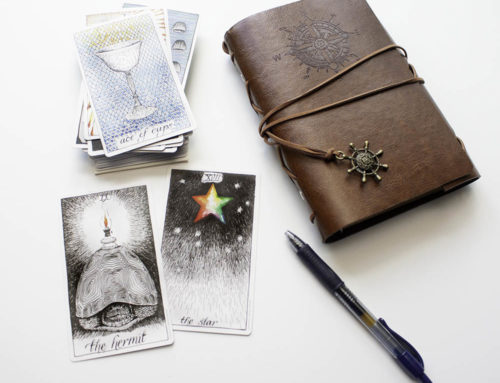

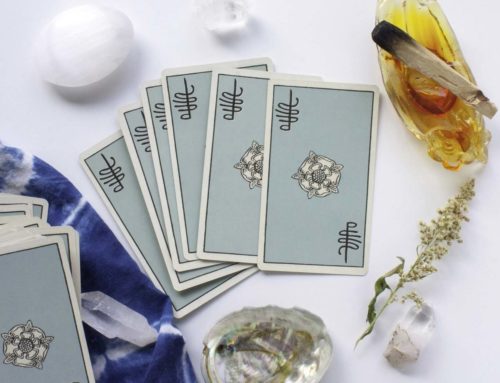

THank you so much.i have somehow been called to learn tarot and i have a feeling i will be doing this for clients in the future.But i have to admit I am totally new to this and so this article will definitely help me get the right deck.so here i am off to my local market first to see if i can get them. thank you again for your wisdom.
Minerva
Hi Minerva! Thank you for the kind feedback, I’m so glad the post helped! 😊 How exciting to be shopping for your first deck!
Hi,
I’m a beginner and just bought my cenntenial deck of RWS but don’t have a book yet to guide me through..Would the Radiant edition of the RWS deck, be a good start for a book?
I know the colors differ between decks but will that affect interpretation to a big extent?
Thanks
Hi Caroline, it should definitely help! The majority of books published in the US and UK will be written for almost any deck using the Rider-Waite-Smith system.
So I play this game, called the Arcana. In it, a character has his own Tarot cards, and my girlfriend is offering to buy me a set of tarot cards because she says they are best when given as gifts. You say that any cards will work, will the cards from the game bring the same result as cards made specifically for reading? I want my first deck to be personal, something for me specifically to turn to when I need guidance, and something for me to learn and grow with. In my mind, a tarot deck from a game I really enjoy would mean a lot to me to have a deck from something i really enjoy. Would they be the same as other decks, or would probably mass-produced fan-merchandise be too impersonal?
Hi Kurisurin, I’m not super familiar with the Arcana game… I’m thinking it’s the one available on the App store and had a Kickstarter recently? If there’s a fan-made deck for it, there’s no reason not to try it out! Even if it isn’t a traditional Marseille or RWS clone, maybe your familiarity with the game’s characters and lore will add meaning to the cards? I’ve noticed a lot of fandom-themed decks are hit or miss as to whether the characters on the cards actually have any correspondences with conventional card meanings -so there is that. If you really struggle with the fan deck, you can always grab a Waite-Smith style deck too!
I would also add something that is important when buying a deck, especially for beginners. This is what you can buy a fake. You can accidentally, unknowingly, buy such a deck. Then you will be disappointed with the quality of the deck and the lack of a guidebook. Or you want to save money and buy, realizing that this is a fake. Yes, these decks are cheaper. But at the same time, the author of the deck does not receive remuneration for his work. And most importantly, how can you use such a fake deck? How can you trust her with the serious matters of your life? If you draw your own deck, then it will work. Even if it is poorly drawn, you put your energy into it. But if this is a fake stolen deck, then what good can you expect from it? Therefore, be honest and buy tarot decks from trusted stores and reputable websites.
Hi Hermit, that is a great point too. I’m thinking about writing a whole post on bootleg tarot decks and how to avoid them (for those unaware: artist decks that were scanned and then illegally reproduced usually by playing card printers overseas. Often they’re found on Aliexpress/Alibaba or Wish). It’s sad that it has become so prevalent these days. Especially on Etsy where many folks want to support independent sellers.